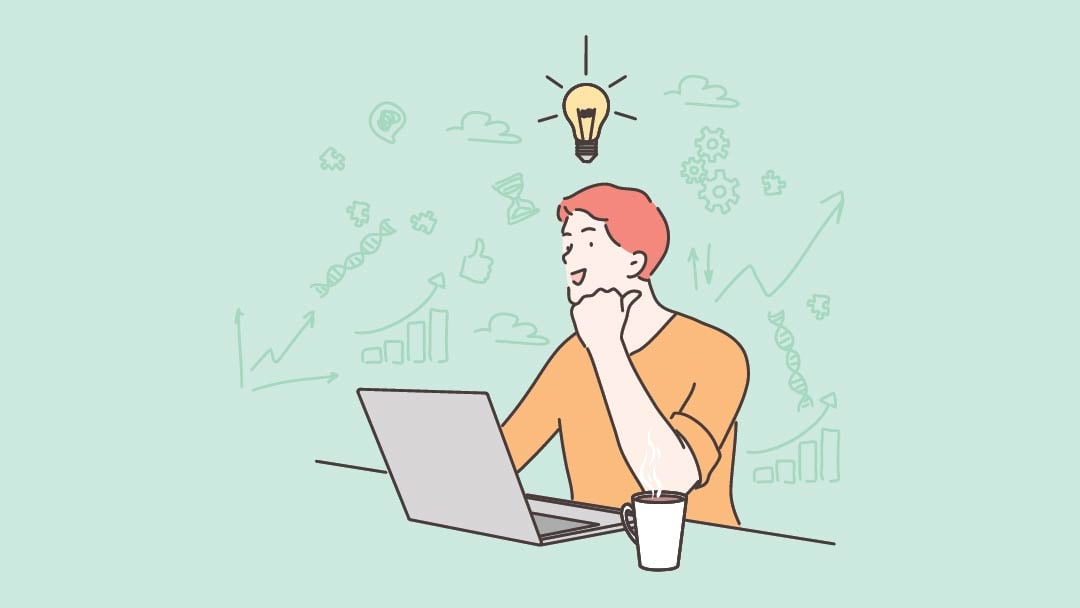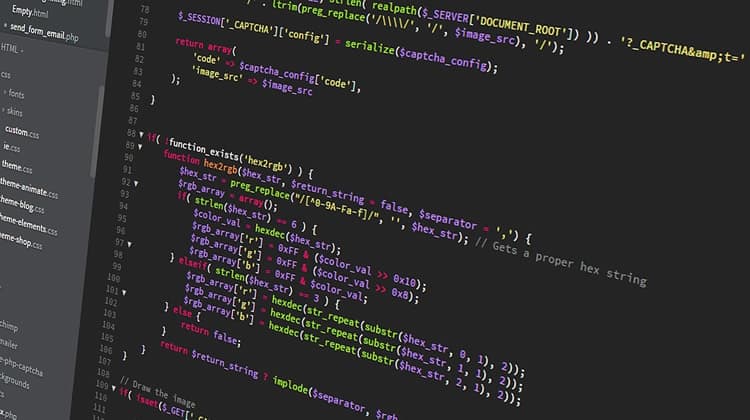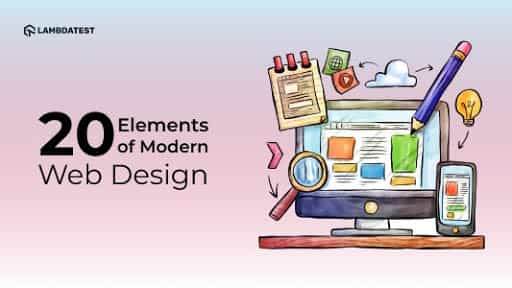All Categories
Featured
Table of Contents
- – Web Design Vs. Web Development - Upwork Tips a...
- – Web Design And Engineering Major - Santa Clar...
- – Web Design - The First 100 Years - Idle Words...
- – Web Design - Wikipedia Tips and Tricks:
- – 10 Good Deeds In Web Design - Nielsen Norman ...
- – Ciw Web Design Series Tips and Tricks:
- – Penner Home - Durham Web Design - Penner Web...
- – Learn Responsive Design - Web.dev Tips and T...
- – St Louis Seo Company - St Louis Web Design A...
- – Web Design Museum 1991 – 2006 Tips and Tricks:
- – 10 Good Deeds In Web Design - Nielsen Norman...
Web Design Vs. Web Development - Upwork Tips and Tricks:
Quick summary Use and the energy, not the visual design, determine the success or failure of a site. Because the visitor of the page is the only individual who clicks the mouse and for that reason chooses whatever, user-centric style has developed as a standard approach for successful and profit-oriented website design - web design frederick md.
and the energy, not the visual design, determine the success or failure of a site. Considering that the visitor of the page is the only individual who clicks the mouse and for that reason chooses whatever, user-centric style has actually ended up being a standard approach for effective and profit-oriented website design. After all, if users can't utilize a feature, it might as well not exist.
g. where the search box ought to be put) as it has actually currently been performed in a number of posts; rather we concentrate on the techniques which, used effectively, can lead to more advanced design decisions and streamline the process of viewing provided info. Please discover that you may be interested in the usability-related short articles we've published before: Principles Of Excellent Website Style And Efficient Website Design Guidelines, In order to use the principles correctly we first need to understand how users communicate with websites, how they believe and what are the basic patterns of users' habits.
Web Design And Engineering Major - Santa Clara University Tips and Tricks:
Visitors glance at each new page, scan some of the text, and click the first link that captures their interest or slightly resembles the important things they're searching for. There are large parts of the page they don't even look at. Most users browse for something interesting (or helpful) and clickable; as quickly as some appealing candidates are found, users click.
If a page supplies users with high-quality content, they are willing to compromise the content with ads and the design of the site. This is the reason that not-that-well-designed websites with high-quality material get a lot of traffic over years. Material is more essential than the style which supports it.
Users do not read, they scan. Notification how "hot" locations abrupt in the middle of sentences. This is normal for the scanning process. Very basic principle: If a site isn't able to satisfy users' expectations, then designer failed to get his job done properly and the company loses cash. The higher is the cognitive load and the less intuitive is the navigation, the more prepared are users to leave the site and search for options.
Web Design - The First 100 Years - Idle Words Tips and Tricks:
Neither do they scan webpage in a linear fashion, going sequentially from one website area to another one. Instead users satisfice; they choose the very first affordable choice. As quickly as they discover a link that looks like it might lead to the objective, there is an excellent chance that it will be instantly clicked.
It doesn't matter to us if we comprehend how things work, as long as we can use them. If your audience is going to imitate you're designing billboard, then design fantastic signboards." Users wish to have the ability to manage their internet browser and depend on the consistent information discussion throughout the site.
If the navigation and website architecture aren't user-friendly, the number of enigma grows and makes it harder for users to comprehend how the system works and how to receive from point A to point B. A clear structure, moderate visual clues and quickly identifiable links can assist users to discover their course to their objective.
Web Design - Wikipedia Tips and Tricks:

claims to be "beyond channels, beyond products, beyond circulation". What does it mean? Since users tend to explore sites according to the "F"-pattern, these three statements would be the first elements users will see on the page once it is loaded. Although the design itself is easy and intuitive, to understand what the page is about the user requires to browse for the response.
Once you have actually attained this, you can communicate why the system is helpful and how users can benefit from it. Do Not Misuse Users' Persistence, In every task when you are going to provide your visitors some service or tool, attempt to keep your user requirements minimal.
Novice visitors want to, not filling long web kinds for an account they may never use in the future. Let users explore the site and discover your services without forcing them into sharing personal information. It's not reasonable to require users to get in an email address to test the function.
10 Good Deeds In Web Design - Nielsen Norman Group Tips and Tricks:
Stikkit is a best example for an easy to use service which needs practically absolutely nothing from the visitor which is unobtrusive and soothing. Which's what you want your users to feel on your web website. Obviously, Termite requires more. Nevertheless the registration can be carried out in less than 30 seconds as the form has horizontal orientation, the user does not even need to scroll the page.
A user registration alone is enough of an impediment to user navigation to cut down on incoming traffic. Handle To Focus Users' Attention, As websites offer both static and vibrant content, some elements of the user interface bring in attention more than others do.
Focusing users' attention to particular locations of the website with a moderate usage of visual aspects can help your visitors to get from point A to point B without thinking of how it really is supposed to be done. The less enigma visitors have, the they have and the more trust they can develop towards the business the website represents.
Ciw Web Design Series Tips and Tricks:
Make Every Effort For Function Direct exposure, Modern web designs are normally criticized due to their method of assisting users with aesthetically appealing 1-2-3-done-steps, big buttons with visual impacts and so on. From the design viewpoint these aspects really aren't a bad thing.
The site has 9 primary navigation options which show up at the first glimpse. The option of colors might be too light. is an essential principle of successful interface style. It does not truly matter how this is attained. What matters is that the material is well-understood and visitors feel comfortable with the method they engage with the system.
Instead a cost: just what visitors are looking for. An optimal option for effective writing is touse brief and concise phrases (come to the point as quickly as possible), use scannable design (categorize the content, utilize numerous heading levels, utilize visual components and bulleted lists which break the circulation of consistent text blocks), usage plain and objective language (a promotion does not need to sound like advertisement; offer your users some affordable and objective factor why they ought to use your service or stay on your site)6.
Penner Home - Durham Web Design - Penner Web Design ... Tips and Tricks:
Users are rarely on a website to delight in the style; additionally, in the majority of cases they are trying to find the information despite the style - web design frederick md. Strive for simplicity rather of intricacy. From the visitors' viewpoint, the finest website style is a pure text, with no advertisements or more material obstructs matching exactly the query visitors used or the material they've been searching for.
Finch clearly presents the info about the site and offers visitors an option of alternatives without overcrowding them with unneeded material. 7. Do not Be Afraid Of The White Space, Really it's really tough to overstate the importance of white space. Not only does it assist to for the visitors, however it makes it possible to perceive the information presented on the screen.
Complex structures are more difficult to read, scan, analyze and deal with. If you have the option between separating 2 design sections by a noticeable line or by some whitespace, it's normally better to use the whitespace service. (Simon's Law): the better you manage to offer users with a sense of visual hierarchy, the easier your material will be to view.
Learn Responsive Design - Web.dev Tips and Tricks:
The exact same conventions and rules must be used to all elements.: do the most with the least quantity of cues and visual elements. 4 major points to be thought about: simpleness, clarity, diversity, and emphasis. Simpleness includes just the components that are crucial for communication. Clarity: all elements must be designed so their meaning is not unclear.
Conventions Are Our Buddies, Standard style of website elements does not lead to an uninteresting web website. In truth, as they decrease the learning curve, the requirement to determine how things work. It would be an usability problem if all websites had various visual discussion of RSS-feeds. That's not that different from our regular life where we tend to get used to fundamental concepts of how we organize data (folders) or do shopping (positioning of items).
comprehend what they're getting out of a website navigation, text structure, search placement etc. A common example from usability sessions is to translate the page in Japanese (presuming your web users do not know Japanese, e. g. with Babelfish) and offer your functionality testers with a job to find something in the page of various language.
St Louis Seo Company - St Louis Web Design And Internet ... Tips and Tricks:
Test Early, Test Typically, This so-called TETO-principle needs to be applied to every web design task as use tests typically provide into substantial issues and concerns related to a given layout. Test not too late, not too little and not for the incorrect reasons.
Some important points to bear in mind: according to Steve Krug, and testing one user early in the project is better than screening 50 near completion. Accoring to Boehm's first law, mistakes are most regular throughout requirements and design activities and are the more expensive the later they are gotten rid of.
That suggests that you create something, test it, repair it and then test it once again. There might be issues which have not been found during the first round as users were almost obstructed by other issues.
Web Design Museum 1991 – 2006 Tips and Tricks:

This holds for designers. After you've dealt with a website for few weeks, you can't observe it from a fresh point of view any longer. You understand how it is constructed and for that reason you understand exactly how it works you have the knowledge independent testers and visitors of your website wouldn't have.
It can be linked to other locations such as graphic design, user experience, and multimedia arts, but is more aptly seen from a technological perspective. It has actually become a large part of individuals's daily lives. It is tough to picture the Internet without animated graphics, various styles of typography, background, videos and music.

During 1991 to 1993 the World Wide Web was born. Text-only pages might be seen utilizing an easy line-mode browser. In 1993 Marc Andreessen and Eric Bina, created the Mosaic internet browser. At the time there were several web browsers, nevertheless the majority of them were Unix-based and naturally text heavy. There had been no integrated approach to graphic design components such as images or noises.
10 Good Deeds In Web Design - Nielsen Norman Group Tips and Tricks:
The W3C was produced in October 1994 to "lead the Internet to its full potential by developing common procedures that promote its evolution and guarantee its interoperability." This dissuaded any one business from monopolizing a propriety internet browser and programming language, which might have modified the impact of the Web as a whole.
As this has actually happened the innovation of the web has also proceeded. There have actually likewise been significant modifications in the way individuals utilize and access the web, and this has changed how sites are created. Considering that the end of the web browsers wars [] brand-new web browsers have been launched. A number of these are open source meaning that they tend to have quicker development and are more encouraging of new requirements.
Learn more about Lovell Media Group LLC or TrainACETable of Contents
- – Web Design Vs. Web Development - Upwork Tips a...
- – Web Design And Engineering Major - Santa Clar...
- – Web Design - The First 100 Years - Idle Words...
- – Web Design - Wikipedia Tips and Tricks:
- – 10 Good Deeds In Web Design - Nielsen Norman ...
- – Ciw Web Design Series Tips and Tricks:
- – Penner Home - Durham Web Design - Penner Web...
- – Learn Responsive Design - Web.dev Tips and T...
- – St Louis Seo Company - St Louis Web Design A...
- – Web Design Museum 1991 – 2006 Tips and Tricks:
- – 10 Good Deeds In Web Design - Nielsen Norman...
Latest Posts
Graphic Design Website Frederick MD
Web Design Services - Networksolutions.com Tips and Tricks:
Web Design Inspiration : The Best Website Design Ideas Tips and Tricks:
More
Latest Posts
Graphic Design Website Frederick MD
Web Design Services - Networksolutions.com Tips and Tricks:
Web Design Inspiration : The Best Website Design Ideas Tips and Tricks: